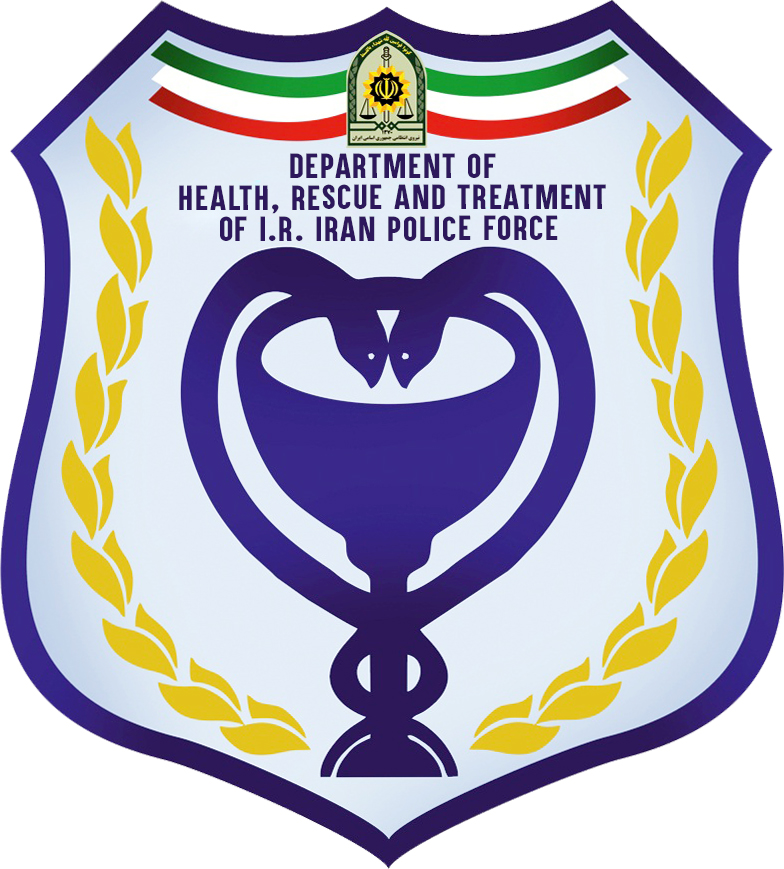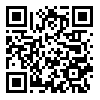
نشریه علمی پژوهشی طب انتظامی Journal of Police Medicine

Volume 10, Issue 4 (2021)
J Police Med 2021, 10(4) |
Back to browse issues page
Download citation:
BibTeX | RIS | EndNote | Medlars | ProCite | Reference Manager | RefWorks
Send citation to:



BibTeX | RIS | EndNote | Medlars | ProCite | Reference Manager | RefWorks
Send citation to:
Ebadi A, Siahkouhian M, Ebrahimi-Torkmani B. Effect of Short-term Glutamine Supplementation on Muscle Damage Indices and Pain after Extroverted resistance activity in Sedentary Young Men. J Police Med 2021; 10 (4)
URL: http://jpmed.ir/article-1-988-en.html
URL: http://jpmed.ir/article-1-988-en.html
1- Department of Physical Education & Sport Science, Faculty of Educational Sciences and Psychology, University of Mohaghegh Ardabili, Ardabil, Iran
2- Department of Physical Education & Sport Science, Faculty of Educational Sciences and Psychology, University of Mohaghegh Ardabili, Ardabil, Iran , Ebrahimi.ba96@yahoo.com
2- Department of Physical Education & Sport Science, Faculty of Educational Sciences and Psychology, University of Mohaghegh Ardabili, Ardabil, Iran , Ebrahimi.ba96@yahoo.com
Full-Text [PDF 1032 kb]
(866 Downloads)
| English Extended Abstract (HTML) (1318 Views)
English Extended Abstract: (401 Views)
| ISSN: 2383-3483; Journal of Police Medicine. 2021;10(4):241-248 | |||
 |
Journal of Police Medicine |  |
|
| ORIGINAL ARTICLE | OPEN  ACCESS ACCESS |
||
Effect of Short-term Glutamine Supplementation on Muscle Damage Indices and Pain after Eccentric Exercise in Sedentary Young Men |
|||
| Akram Ebadi1 MSc, Marefat Siahkouhian1 PhD, Bahman Ebrahimi-Torkmani1* PhD | |||
| 1 Department of Physical Education & Sport Science, Faculty of Educational Sciences & Psychology, University of Mohaghegh Ardabili, Ardabil, Iran. | |||
| ARTICLE INFO | EXTENDED ABSTRACTEXTENDED ABSTRACT | ||
How to cite this article: Ebadi A, Siahkouhian M, Ebrahimi-Torkmani B. Effect of Short-term Glutamine Supplementation on Muscle Damage Indices and Pain after Eccentric Resistance Activity in Sedentary Young Men. J Police Med. 2021;10(4):241-48. |
INTRODUCTION Muscle injury caused by sport activities is accompanied with muscle function destruction, delayed contusion and muscular proteins increase in blood flow [1]. Creatine kinase (CK), lactate dehydrogenase (LDH), and myoglobin are biochemical indicators of muscles' cells destruction. The secretion of these enzymes is caused by intense muscle tension due to contraction, which leads to injury [2]. … [3]. Muscle injury caused by sports activities has been studied in the last few decades and its causes have been extensively studied in various journals [4-6]. In this regard, during the seven-month training period, 42% of rangers suffered at least one muscle injury, Zareei et al reported. [7]. ... [8-15]. Some studies have reported that glutamine supplementation may be beneficial for athletes [11]. Moeini et al have reported that short-term supplementation of creatine, glutamine, and CGT prevents muscle injury caused by intense sports activities [16]. Glutamine, as a fuel source for the immune system, can also reduce the intensity of inflammatory responses and as a result, it reduces the indicators of plasma muscle injury [17]. Habibi et al reported that short-term glutamine supplementation reduced CK in athletes but had no significant effect on C reactive protein [18]. On the other hand, Rahmaninia et al have reported that glutamine supplementation has no significant effect on creatinine kinase [19]. Considering that combat readiness is the main concern of all armed forces and previous studies have reported a high prevalence of muscle injuries in military and training courses [20, 21], so the purpose of the present study was to evaluate the effect of glutamine supplementation on muscle injury indices and perceived pain intensity following extroverted exercise in inactive male students. RESEARCH TYPE This study is a quasi-experimental study with repeated measures. RESEARCH SOCIETY, PLACE, AND TIME This research was performed in 2017-2018. The statistical population of this research was among all inactive male students of Mohaghegh Ardebili University who had not participated in regular sports activities during the three years leading up to the study. SAMPLING METHOD & NUMBER Sample content was estimated by using the average comparison formula of the two independent groups, taking into account 1-a=0.95 and 1- β=0.8 and with a power of 80% for two groups of 20 people [22] which were divided into two supplement nodes (n=10) and placebo (n=10) by limited randomization method. USED DEVICES & MATERIALS One hour before the practical tests, the subjects were given 0.1 g of glutamine supplement (supplement nodes) and starch (placebo nodes) in combination with 300 ml of water [23]. Muscle injury and delayed muscle contusion and bruising in the lower torso muscles were performed using knee flexion movements with weights equivalent to 70% of a maximum repetition. Subjects started warming up in two-octet shifts with sub-maximal repetitions, then in three shifts of 15 with 70% of one maximum repetition, they performed knee flexion movement. Subjects were asked, with the help of the researcher, to gently stretch the quadriceps muscle and report the number that best describes their pain and bruising. This measurement was performed in three basic levels, 24 hours and 48 hours after extroverted exercise. An Analog visual pain scale diagram was used for this purpose. On this scale, a 10 cm graduated horizontal line is drawn, with a score of 10 for the most severe pain and a score of zero for the most painless. In Iran, the reliability of this scale has been confirmed with a correlation coefficient of r = 0.88 [24, 25]. ... [26]. To measure the level of creatine kinase and lactate dehydrogenase in the subjects, 5 cc of blood was taken from the brachial vein of the subjects by the laboratory science expert before training, 24 and 48 hours after training.. ETHICAL PERMISSIONS The study was approved by the Department of Physical Education and Sports Sciences of Mohaghegh Ardabili University with the code of ethics IR.SSRI.REC.1400.1243. The objectives of the research and the work process were explained to all participants and the individuals entered the study consciously after signing the testimonial. STATISTICAL ANALYSIS Independent T-test was used to compare the results of the two groups in different time stages and to compare the changes of each variable in different stages of measurement and determine the effect of glutamine supplementation on the variables, repeated measures analysis of variance was used and if significant, Bonferroni post hoc test was used to determine the differences between different sampling stages. All calculations were performed using SPSS 22 statistical software at the significance level of p <0.05.. FINDING BY TEXT In this study, 10 samples with mean age of 25.33±0.85 years in the placebo group and 10 samples with a mean age of 24.82±0.50 years in the supplement group were studied. Independent T-test showed that there was no significant difference between the subjects' anthropometry indices in baseline (p <0.05; Table 1). The results of repeated measures analysis of variance and Bonferroni post hoc test showed that there was a significant difference between stages of measurement in the perceived pain intensity variable in the placebo group; perceived pain intensity increased significantly compared to baseline in 24 hours (p = 0.008) and 48 hours (p = 0.046) after exercise in the placebo group, while in the supplement group, no significant change in pain intensity was observed in different stages of measurement. Also, the difference between the two groups was significant at 24 and 48 hours after exercise (p <0.05; Tables 2 and 3). Mean creatine kinase and lactate dehydrogenase indices increased 24 and 48 hours after exercise in both groups compared to baseline but this increase was not statistically significant (p <0.05). MAIN COMPARISON TO THE SIMILAR STUDIES … [27]. According to the findings of the present study, Najarzadeh et al Reported that short-term use of glutamine supplementation did not have a significant effect on muscle injury indices but reduced muscle pain at 24 and 48 hours after extroverted resistance activity [16]. Qomi et al also reported that glutamine supplementation did not have a significant effect on muscle creatine kinase after extrovert resistance activity [16, 28]. On the other hand, some researchers have reported that glutamine consumption has a significant effect on muscle injury indices and reduces these indices after exercise [29, 30]. In this regard, Rouhi et al have reported that seven days of glutamine supplementation has significantly reduced the indicators of muscle damage and oxidative stress [29]. The reasons for the differences in the findings of this study include the effective concentration of the drug, the number of days taken, the type of exercise, and the level of physical fitness of the participants. Glutamine supplementation also reduced the perception of muscle pain in the supplement group at 24 and 48 hours after extroverted resistance training, which is consistent with the results of research by Najarzadeh et al. as well as Cruzat [16, 17]. In another study, Biniaz et al. reported that glutamine supplementation significantly reduced creatinine kinase and muscle pain in people with diabetes 72 hours after exercise [19]. Research in this area has reported that glutamine supplementation in both men and women reduces pain after 72 hours of exercise [19]. … [31-34]. SUGGESTIONS Additional studies are suggested to determine the effect of protein synthesis and antioxidant capacity. It is also suggested that future researches measure the levels of pre-inflammatory cytokines. It seems that this amount of supplementation in the number of days and the effective concentration of daily medication is not enough to show the positive effects of this amino acid and should be taken in larger amounts or over more days. LIMITATIONS Some of the limitations of the present study were the lack of full access to the subjects and their lack of control over nutrition, lack of control over the amount of sleep, rest and motivation, and mental state of the subjects. CONCLUSIONS Although glutamine supplementation did not prevent elevated levels of creatine kinase and lactate dehydrogenase enzymes and did not actually reduce muscle damage, glutamine supplementation can be effective in reducing pain after muscle injury. CLINICAL & PRACTICAL TIPS IN POLICE MEDICINE Due to the importance of physical fitness among police forces and draftees, the results of this study can be useful in preventing delayed muscle contusion and reducing muscle injuries after participating in strenuous exercise. In order to reduce the pain as a result of military exercises, it is recommended to avoid overtraining in the first month of training exercises in addition to taking glutamine supplements. ACKNOWLEDGMENTS All those who somehow cooperated sincerely with the researchers in conducting this research and also subjects of this study are hereby thanked and appreciated. CONFLICT OF INTEREST The authors of the article hereby state that there is no conflict of interest in the present study. FUNDING SOURCES The present study had no financial support. TABLES & CHARTS Show attached file. |
||
| *Correspondence: Address: Department of Physical Education & Sport Science, University of Mohaghegh Ardabili, Daneshgah Street, Ardabil, Iran. Postal Code: 56199-11367 Tel: +98453150500 Fax : - Mail: ebrahimi.ba96@yahoo.com |
|||
| Article History: Received: 09/02/2021 Accepted: 17/07/2021 ePublished: 07/10/2021 |
|||
|
|||
| REFERENCES | |||
|
|||
Article Type: Original Research |
Subject:
Police Related Trauma
Received: 2021/02/9 | Accepted: 2021/07/17 | Published: 2021/10/2
Received: 2021/02/9 | Accepted: 2021/07/17 | Published: 2021/10/2
Extended Abstract [HTM 67 KB] (38 Download)
Send email to the article author
| Rights and permissions | |
 |
This work is licensed under a Creative Commons Attribution-NonCommercial 4.0 International License. |


